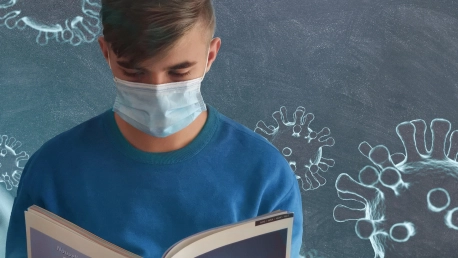The COVID-19 pandemic has considerably changed our daily lives, and businesses—and schools around the world are no exception to the rule. With the “new normal” in mind, the beginning of the new school year could prove to be a big step towards a brighter future. On the other hand, this doesn’t mean that parents and children know exactly what to expect or what steps they need to take for their safety. Practices around the world might provide them with important information, while also helping them adjust to the new school environment.
Why Schools in France Remain Open
While France is among the worst affected countries, most schools remain open in this European country, and the government has also recently relaxed the rules for parents. Only 1% of France’s 60,000 schools are presently closed, according to Jean-Michel Blanquer, the French Minister of Education. The official went on to say that, after the reopening of schools, the situation is the best possible given the pandemic.
“We have about 1,200 new cases of COVID-19 among students, compared to the previous week,” he added. However, France faced a rise in the number of new coronavirus cases in September, peaking at more than 10,000 cases per day on September 12. Other French officials have advised caution and warned citizens that new restrictions might be in order if the number of cases continues to rise. However, President Emmanuel Macron took a positive stance when he said “better days” are sure to come, even if the pandemic will not go away in the coming months.
Where Back to School Looks Different
While France is struggling to make sure its strategy to reopen schools is a success, other countries are pursuing different plans. Sweden continues to keep its schools open and went as far as to refrain from making masks mandatory for students. Although this strategy remains controversial, science seems to agree with the Swedish authorities. A recent Nordic study demonstrated that keeping primary schools open during the crisis may not have influenced the spread rates.
Scientists found no measurable difference between the number of COVID-19 cases among children in Sweden, compared with neighboring Finland, where the authorities opted to close them during the outbreak. Sweden’s chief epidemiologist Anders Tegnell has gone as far as to ask other countries not to reinstate harsh restrictions if they experience a rise in the number of new cases. “Lifting and closing things is really detrimental to trust and will also have a lot more negative effects than keeping some kind of level of measures all the time. Opening and closing schools, for example, would be disastrous,” Tegnell said.
Is Reopening Schools a Good Idea for Everyone?
Even if the Swedish example seems to be at least partially successful, reopening schools may not be a great idea for all. Israel is experiencing a second lockdown after a new coronavirus outbreak sent the daily number of new infections surging to more than 4,000 by the middle of September. The outbreak started just a few days after Israel reopened its schools, and prompted many principals to resort to hybrid or online education almost immediately, as education institutions proved to be the worst affected. But was reopening schools alone responsible for the outbreak or did Israel experience other contributing factors, too?
Closer to home, the Centers for Disease Control and Prevention (CDC) argued that promoting behaviors that reduce the spread of COVID-19 is essential while reopening American schools, but Israel experienced a period of very hot weather that made it difficult for children to wear masks in schools. This, along with crowded classrooms that made social distancing difficult and, perhaps, the false belief that the pandemic had been contained, created a false sense of security. All these factors may have converged in creating a fitting environment for a new outbreak.
The CDC advised schools to adopt several strategies especially designed to encourage behaviors that reduce the spread of COVID-19. Personal prevention practices like hand washing and staying home when sick, as well as proper surface sanitation, can play a critical role, according to the health protection agency. Several other actions can be taken by school administrators to reduce the possibility of COVID-19 exposure for both children and school personnel.
During this crisis, the return to school and, by extension, the whole learning process will undergo substantial changes. Many of these adjustments depend on policymakers and school administrators making the right decisions, but also on the capacity of parents and teachers to adapt to new conditions. One important factor seems to be explaining the new rules to students to help them be proactive and safe during these difficult times. Ultimately, children and young adults need to understand why hygiene rules, wearing a mask, and maintaining physical distance are now more important than ever.









